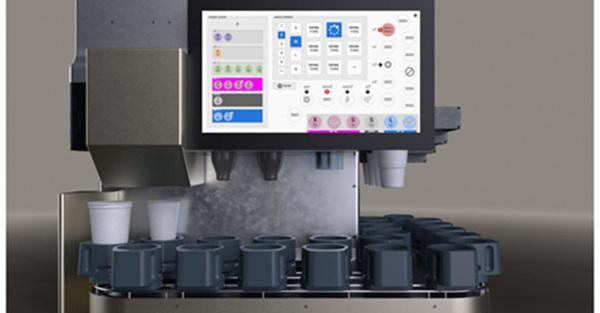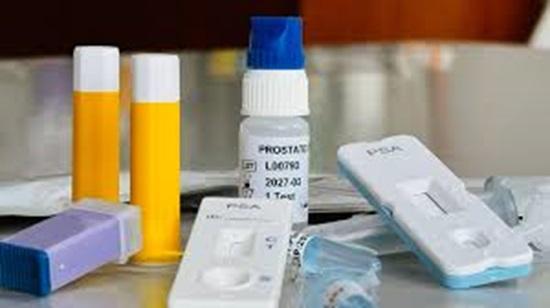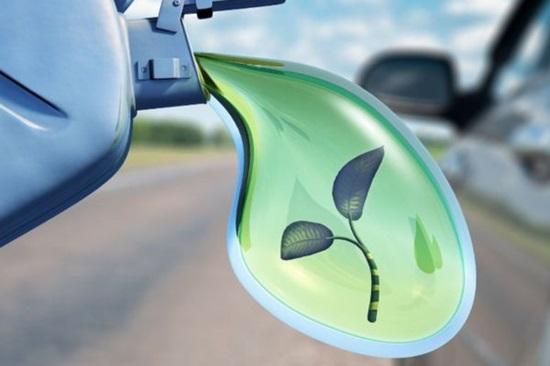Press release
The Global Bioethanol for Automotive Market is projected to reach a market size of USD 45.03 Billion by the end of 2030.
According to the report published by Virtue Market Research The Global Bioethanol for Automotive Market was valued at USD 25.28 Billion and is projected to reach a market size of USD 45.03 Billion by the end of 2030. Over the forecast period of 2025-2030, the market is projected to grow at a CAGR of 10.1%.Request Sample Copy of this Report @https://virtuemarketresearch.com/report/bioethanol-for-automotive-market/request-sample
The bioethanol for automotive market has been steadily gaining attention across the globe as countries look for cleaner and greener fuel alternatives. One long-term factor driving this growth is the increasing demand for renewable energy sources to cut down carbon emissions from vehicles. Governments in many regions have set strict rules on emissions and fuel efficiency, encouraging the use of bioethanol as a substitute for traditional gasoline. Unlike fossil fuels, bioethanol is produced from plants such as sugarcane, corn, and other biomass, making it renewable and less harmful to the environment. This long-term shift toward sustainable fuels has created a supportive ecosystem for producers, distributors, and vehicle manufacturers to adopt and integrate bioethanol into their systems. Over the coming years, this regulatory push combined with growing environmental awareness is expected to play a key role in shaping the market.
The outbreak of COVID-19 had a visible effect on the bioethanol for automotive industry. During the peak of the pandemic, travel restrictions and lockdowns caused a sharp decline in fuel demand. This directly reduced the use of bioethanol in the transport sector as vehicle movement dropped significantly. Production facilities also faced interruptions due to labor shortages and supply chain disruptions. However, as restrictions eased, the market began to recover, supported by government stimulus programs and a rebound in vehicle usage. While the pandemic created short-term hurdles, it also highlighted the importance of energy security and the need to diversify fuel sources. This has indirectly benefited bioethanol, as governments and industries realized the urgency of reducing reliance on fossil fuel imports.
In the short term, one of the key drivers boosting the market is the growing number of flexible fuel vehicles being introduced by leading automobile manufacturers. These vehicles are designed to run on a mix of gasoline and bioethanol, allowing users to choose more sustainable options without sacrificing performance. With more models entering the market, consumer acceptance of bioethanol is increasing. This immediate push from the automotive sector is helping bioethanol gain a stronger foothold in regions where alternative fuels are being actively promoted.
An important opportunity that stands out in the industry is the use of advanced production technologies to make bioethanol from non-food crops and agricultural waste. Traditional methods rely heavily on food crops such as corn and sugarcane, which sometimes raises concerns about food security. However, the development of second-generation bioethanol made from lignocellulosic biomass, forestry residues, and other agricultural by-products opens a new growth path. This not only reduces competition with food production but also creates a sustainable way to manage agricultural waste. Companies investing in such innovations are likely to benefit from new revenue streams and stronger support from policymakers focused on circular economy practices.
One clear trend that has been observed is the increasing collaboration between governments, automotive manufacturers, and energy companies to establish a wider infrastructure for bioethanol distribution. More blending stations are being set up in urban and rural areas, ensuring consumers have easy access to ethanol-blended fuels. Additionally, awareness campaigns are being run to educate drivers about the benefits of bioethanol, from lower carbon emissions to cost-effectiveness in regions where it is locally produced. This trend reflects a collective movement toward building a sustainable energy ecosystem where bioethanol can play a central role.
Segmentation Analysis:
By Feedstock Type: Cellulose-Based, Starch-Based, Sugar-Based, Others
Largest in this segment is Starch-Based and Fastest Growing During The forecast period is Cellulose-Based. The bioethanol for automotive market by feedstock type is shaped by a mix of traditional and advanced raw materials that vary in availability and cost. Starch-based feedstocks such as corn dominate this segment because they are widely produced in countries like the United States, where corn farming is already established at a massive scale. These raw materials are easier to process into bioethanol using conventional fermentation technologies, which has helped them become the largest contributor within the segment. However, cellulose-based feedstocks are emerging as the fastest-growing category as industries explore non-food resources like agricultural residues, forestry waste, and dedicated energy crops.
The drive toward reducing the food-versus-fuel debate and utilizing waste streams for energy production is pushing cellulose-based bioethanol adoption. Sugar-based feedstocks like sugarcane are also important, especially in Brazil, but their growth is slower due to geographic limitations. The "Others" category, which may include algae and hybrid crops, remains smaller but represents areas of experimentation. As technologies improve, cellulose-based sources stand out for their potential to provide scalable, sustainable, and environmentally responsible bioethanol options.
By Fuel Blend: E5, E10, E15 to E70, E75 to E85, Others
Largest in this segment is E10 and Fastest Growing During The forecast period is E75 to E85. In the bioethanol for automotive market by fuel blend, different mixtures of ethanol and gasoline are adopted based on government mandates, consumer preferences, and vehicle compatibility. E10, which contains 10% ethanol and 90% gasoline, is the largest in this segment due to its widespread adoption across multiple countries. It offers a balance of lower emissions and compatibility with most conventional engines, which has made it a favored blend for both policymakers and consumers. On the other hand, E75 to E85 blends, often referred to as flex-fuels, are projected to grow the fastest during the forecast period.
These blends allow higher ethanol content and are mainly used in flexible fuel vehicles, particularly in regions like Brazil and the United States, where infrastructure and vehicle models support them. E15 to E70 blends serve as transitional mixtures, but their growth is less prominent compared to higher ethanol concentrations. E5 blends remain present in countries that are beginning their ethanol journey, while the "Others" category includes experimental or region-specific blends. The rise of E75 to E85 fuels is supported by increasing investments in flex-fuel vehicle production and growing consumer acceptance of high-ethanol fuels.
By Fuel Generation: First Generation, Second Generation, Third Generation
Largest in this segment is First Generation and Fastest Growing During The forecast period is Second Generation. The bioethanol for automotive market by fuel generation shows how production technologies are evolving over time. First-generation bioethanol, produced primarily from food crops such as corn, wheat, and sugarcane, holds the largest share in this segment. The dominance of first-generation fuels comes from their mature production processes, established infrastructure, and the relative ease of fermentation from these feedstocks.
However, concerns over food security and environmental sustainability have encouraged the development of newer generations. Second-generation bioethanol, derived from non-food biomass like crop residues, woody materials, and grasses, is the fastest-growing during the forecast period. It has captured the attention of governments, investors, and researchers because of its promise to minimize competition with food supplies while reducing greenhouse gas emissions more effectively.
Third-generation fuels, often derived from algae, remain in the research and pilot project stages, with limited commercial adoption due to high production costs and technological barriers. Nonetheless, ongoing advancements are being closely monitored as potential breakthroughs in algae-based bioethanol could transform the industry in the long run. The growth of second-generation fuels highlights the transition from reliance on traditional food-based resources toward innovative, sustainable alternatives.
Read More @https://virtuemarketresearch.com/report/bioethanol-for-automotive-market
Regional Analysis:
Largest in this segment is North America and Fastest Growing During The forecast period is Asia-Pacific. The bioethanol for automotive market by region shows varying dynamics depending on fuel policies, agricultural resources, and technological investments. North America is the largest in this segment, led primarily by the United States, where strong government mandates, extensive corn production, and widespread infrastructure for ethanol blending have built a highly developed market. Bioethanol has become central to reducing carbon intensity in transportation fuel across the region. Meanwhile, Asia-Pacific stands out as the fastest-growing during the forecast period.
Rising energy demand, increasing vehicle ownership, and active policies in countries such as China, India, and Thailand are fueling this rapid growth. South America, especially Brazil, plays an important role with sugarcane-based ethanol and flex-fuel vehicles, but its overall regional market size is smaller compared to North America. Europe continues to progress steadily due to sustainability initiatives and emission-reduction targets, though fragmented policies among member states sometimes limit uniform adoption. The Middle East & Africa remain in the early stages of market development, focusing on pilot projects and limited bioethanol blending programs. The sharp growth in Asia-Pacific reflects both rising domestic production and supportive government initiatives to reduce dependence on imported fossil fuels.
Latest Industry Developments:
• Investment and technology shift toward second-generation feedstocks and industrial partnerships: Large-scale investment into cellulosic and non-food feedstock conversion is emerging as a clear market trend, with capital flowing to modular plants, enzyme and pretreatment startups, and collaborative pilot projects that lower conversion costs and scale supply chains. This trend sees financiers, engineering firms, and biomass suppliers forming consortia to commercialize proven lab methods and shorten time-to-market for cellulosic ethanol, while also diverting agricultural residues away from disposal streams. The aim is to reduce feedstock volatility, improve lifecycle emissions profiles, and win regulatory support by demonstrating tangible decarbonization at competitive cost.
• Acceleration of higher-blend infrastructure roll-out and retail fuel upgrades: The market is trending toward rapid expansion of dispensing infrastructure for blends above E10, backed by grant programs, retailer incentives, and targeted public funding to retrofit pumps, storage tanks, and supply logistics. This movement de-risks adoption for downstream actors by sharing capital costs and standardizing equipment specifications, which in turn signals retailers and fuel distributors to list higher-ethanol blends. By making high-blend fuels physically available and visible at more forecourts, the industry expects to convert latent demand into measurable sales while smoothing supply chain bottlenecks created by seasonal feedstock swings.
• Closer alignment with vehicle makers and policy levers to support flex-fuel uptake: A pronounced trend is alignment between fuel producers, automotive OEM strategies, and national policy frameworks to promote flex-fuel and ethanol-capable powertrains. Automakers' moves to introduce ethanol-capable hybrids and flex models, combined with governments adjusting taxes, mandates, or incentives, create synchronized pull through both demand and supply channels. This coordinated approach reduces market friction: vehicle compatibility grows while regulatory signals improve ethanol competitiveness, encouraging manufacturers and fuel suppliers to plan investments around predictable blended-fuel roadmaps.
customize the Full Report Based on Your Requirements @https://virtuemarketresearch.com/report/bioethanol-for-automotive-market/customization
CONTACT US :
Virtue Market Research
Kumar Plaza, #103, SRPF Rd, Ramtekadi, Pune, Maharashtra 411013, India
E-mail: megha@virtuemarketresearch.com
Phone: +1-917 436 1025
ABOUT US :
"Virtue Market Research stands at the forefront of strategic analysis, empowering businesses to navigate complex market landscapes with precision and confidence. Specializing in both syndicated and bespoke consulting services, we offer in-depth insights into the ever-evolving interplay between global demand and supply dynamics. Leveraging our expertise, businesses can identify emerging opportunities, discern critical trends, and make decisions that pave the way for future success."
This release was published on openPR.
Permanent link to this press release:
Copy
Please set a link in the press area of your homepage to this press release on openPR. openPR disclaims liability for any content contained in this release.
You can edit or delete your press release The Global Bioethanol for Automotive Market is projected to reach a market size of USD 45.03 Billion by the end of 2030. here
News-ID: 4224171 • Views: …
More Releases from Virtue Market Research

Global Automated Beverage Dispenser Market is projected to reach the value of $8 …
According to the report published by Virtue Market Research In 2024, the Global Automated Beverage Dispenser Market was valued at $6.36 Billion, and is projected to reach a market size of $8.35 Billion by 2030. Over the forecast period of 2025-2030, market is projected to grow at a CAGR of 5.6 %.
Request Sample Copy of this Report @ https://virtuemarketresearch.com/report/global-automated-beverage-dispenser-market
The Global Automated Beverage Dispenser Market is witnessing significant growth, driven…

Global Serological Test for Influenza Disease Diagnostics Market is projected to …
According to the report published by Virtue Market Research In 2024, the Global Serological Test for Influenza Disease Market was valued at $0.8 Billion, and is projected to reach a market size of $1.41 Billion by 2030. Over the forecast period of 2025-2030, market is projected to grow at a CAGR of 7.3%.
Request Sample Copy of this Report @https://virtuemarketresearch.com/report/serological-test-for-influenza-disease-diagnostics-market/request-sample
The global serological test for influenza disease market has seen…

Global Prostate Cancer Testing Kits Market is projected to reach the value of $7 …
According to the report published by Virtue Market Research In 2024, the Global Prostate Cancer Testing Kits Market was valued at $3.21 Billion, and is projected to reach a market size of $7.74 Billion by 2030. Over the forecast period of 2025-2030, market is projected to grow at a CAGR of 13.4%.
Request Sample Copy of this Report @https://virtuemarketresearch.com/report/prostate-cancer-testing-kits-market/request-sample
In the realm of healthcare, the Global Prostate Cancer Testing Kits…

Global Workplace Innovation Platform Market is projected to reach the value of $ …
According to the report published by Virtue Market Research in 2024, the Global Workplace Innovation Platform Market was valued at $ 16.45 Billion, and is projected to reach a market size of $ 30.44 Billion by 2030. Over the forecast period of 2025-2030, market is projected to grow at a CAGR of 10.8 %.
Request Sample Copy of this Report @ https://virtuemarketresearch.com/report/workplace-innovation-platform-market/request-sample
The global workplace innovation platform market has experienced substantial…
More Releases for Generation
Digital Services for Lead Generation | Local Lead Generation Websites | Lead Gen …
Lead Generation consists of attracting and renovating target audiences that have shown interest in your product or services. The objective is to guide prospects through the purchaser’s journey to the end of the sales funnel. Content is one of the leading tools B2B marketers utilize to create leads. This may comprise of social media posts, blog posts, coupons and live events. You utilize the forms to capture leads that employ…
Digital Services for Lead Generation, Local Lead Generation Websites
Businesses these days are reliant on lead generation to advertise their service before the consumers to get more business and endure in bullish market. The Lead generation service is an unceasing effort to attract and change the target audience’s mind towards the business offering. It is an act of completely compelling the consumer to purchase the business services. It will boost brand image and outcome in good sales for the…
Digital Services for Lead Generation, Lead Generation Platforms: Ken Research
The Lead generation is the practice of gaining fresh leads for your business. It is cultivating the interest of a person in your product or service so much that they distribute you with their contact specifics. It is the start of the technique which leads to a prospective customer turning into a purchaser. And then perchance buying from your business. Your business should then be nurturing such leads that you…
Digital Services for Lead Generation | Lead Generation Platforms: Ken Research
There are several channels and marketing tools for the digital marketers to utilize to get customers to notice their brand. If your business functions appropriate when in direct communication with the customers over the phone, the lead generation marketing can provide a number of benefits.
The lead generation marketing is about motivating the interest of customers in a product or service and capturing that interest by obtaining those customers to…
Local Lead Generation Websites | Best Companies for Online Lead Generation | Lea …
The Lead Generation is a foremost marketing procedure that comprise finding people who would be interested in purchasing your product and/or services. It comprises collecting contact details of the interested impending buyers/consumers in exchange for something that is of worth to them - for e.g educational, collateral, research content or a free trial of a product. This is a foremost activity to build a sales pipeline. The Lead Generation is…
lead generation company | Best Lead Generation Company in India | Online Lead Ge …
Lead Generation: The Lead generation firms supply your corporate with the hot leads you necessary to acquire fresh clients, while releasing up your time to spend on other responsibilities, like product improvement or quality declaration. Contrariwise, you could double down on fresh leads, hammering up business in tandem with leads delivered by the generation firms. The Business enlargement is openly correlated with finding fresh clients and making them happy, and…
